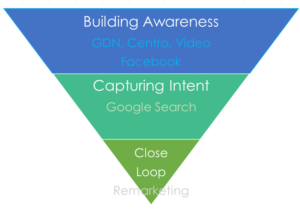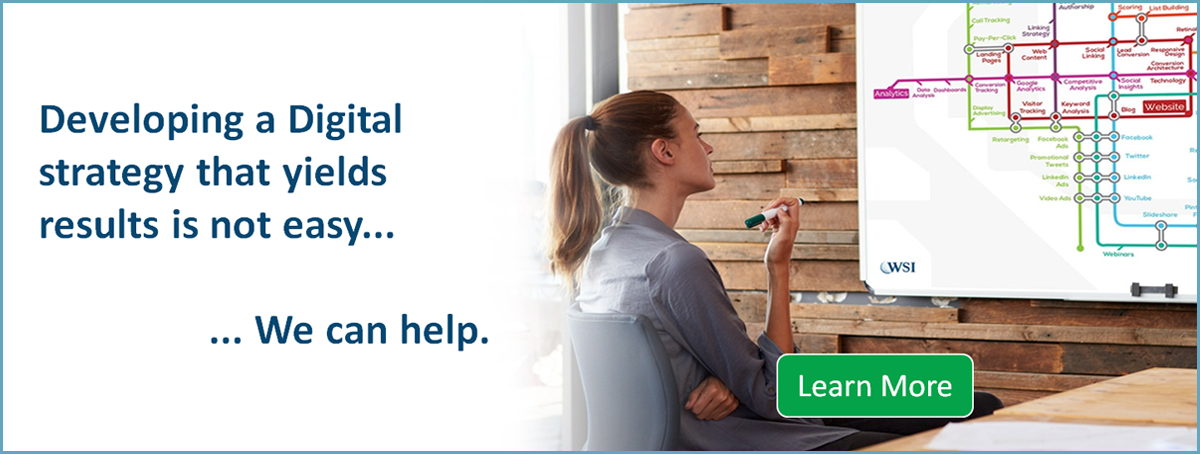Even if you have a beautifully-designed, innovative, market-leading product, leaving your marketing to chance, or hoping your customers will find out about your services organically, is not a viable approach..
“Growth is never by mere chance; it is the result of forces working together.” – James Cash (JC) Penney
Demand generation does exactly what it says on the tin: it generates demand for your product or service through the use of a highly-targeted advertising campaign.
Once you are clear on your company’s mission, branding, and unique selling points, and have defined your target audience and buyer personas, you need to start finding prospects so you can introduce them to your brand.
The ultimate goal of demand generation is to generate a significant number of high-quality leads based on their interactions with your brand. Your sales team can then nurture these leads and start moving them along your sales funnel.
Why is data so important for demand generation?
Demand generation campaigns take a data-driven approach, using research and analysis to better target potential customers, and identify the right channels, according to pre-defined criteria.
A successful demand generation strategy also leverages data to take the guesswork out of what activities your should carry out to attract the attention of customers and when.
For example, lets say you are in the medical devices vertical and you are marketing a smart spoon that reduces the shake effect that Parkinson’s patients experience. You may be tempted to try and optimise your website for “smart spoons”. However running a paid search advertising campaign lets you test lots of keywords and in fact, you learn that consumers who are interested in your product actually search for “Non-shake cutlery”.
This data helps you identify potential customers that have the right problem, meaning: the problem you actually are very, very uniquely qualified to solve.
It’s important to be flexible and agile so you can use this data to make real-time decisions to ultimately drive revenue.
You also need to be constantly testing and optimizing campaigns across all channels based on the metrics you are measuring and the results of your decisions.
Companies often spend a fortune on advertising yet they never conduct proper A/B tests to evaluate what’s working and what isn’t.
In our experience, this is usually the quickest way to turn failing campaigns into profitable investments.
What marketing techniques does demand generation use?
Demand generation refers to an overarching strategy that encompasses all sales and marketing activities throughout the funnel, from initial engagement through to after-sales communications.
The bottom line is that it can include any tactic that generates demand for your company’s product or service. However to keep it simple, when we talk about demand generation here, we are referring to digital advertising tactics.
To put it in to context, Inbound marketing tactics like Search Engine Optimisation (SEO), where you are waiting for the search engines to find you, definitely have an important role to play in your overall digital strategy but they can be costly and take time to get results.
On the other hand, our Demand generation tactics use paid advertising campaigns so you can get started quickly and start seeing immediate results.
We like running 90-day pilot programmes – Long enough to get results but short enough to keep your team engaged.
– Digital Strategy Blogs –
Demand generation campaigns cover the whole spectrum of the sales funnel, from generating awareness, to educating customers on the benefits of your product to closing the sale, and then following up after the sale.
Different marketing techniques can be used to attract customers at different stages of the buying journey.

Here are some of the main marketing techniques that demand generation uses.
Display advertising
Display advertising is considered a top of funnel strategy to get your brand in front of a bigger audience. It works well to build awareness about your product or service with potential customers who in many cases have not yet realised that they need your service.
Its an opportunity to “plant the seed” and get them thinking. With this tactic You typically place banner ads and / or native text ads on third-party websites that are relevant to your target audience. Based on the Persona development exercise in our strategy section, we already know the type of content that your target customer is interested in which helps us select the best website placements for these ads.
When companies think about advertising on the web they immediately think of Google and Facebook but its important to know that the web is a big place and these advertisers only represent a portion of available inventory when it comes to placing ads online.
At WSI, we use our Programmatic display process to provide our clients with access to a huge range of advertising inventory where we can buy display advertising in real time.
Purchasing advertising programmatically requires a sophisticated technology platform. WSI have developed a global partnership with Centro who provide us with the most comprehensive media automation and intelligence platform in the industry.
We use Demand Side Platforms (DSP’s) to provide our clients with access to a huge range of digital advertising inventory where we can buy display advertising in real time.
DSPs have revolutionized how marketers access and leverage Real-Time Bidding (RTB) in the display advertising ecosystems. We can now effectively reach your potential customers anywhere on any platform, efficiently and cost-effectively – following them around the web.
We can effectively target them with the appropriate messaging based on real-time criterion, from geo-targeting (where they are), their search history to the device they are using (e.g. mobile).
For clients operating in a very specific niche we can provide access to a private marketplace with a library of over 2,000 active private deals across hundreds of top sites.
Using this platform we can offer “Hyperlocal” targeting – Essentially we can show your ads to people within a specific geographic radius.
For example let’s say you were interested in targeting software companies attending the SAAS convention in the RDS convention centre in Dublin – We could run a campaign targeting people within a 0.25 kilometre radius of the RDS.
We could also target the major hotels where these attendees were likely to be staying!
With these DSPs, we can automate the process of bidding on an ad impression in real time, as these platforms automatically analyse ad impressions to work out which ones are worth bidding on and what price you should bid for this ad position. By automating this previously manual process, we can more effectively scale your demand generation activities and deliver better results.
Paid Search
Paid search is a great strategy for targeting customers who are further along the buying journey
Using Paid Search, we can identify people who are looking for your products or services and immediately connect them with your business.
When you know the intent of someone searching the Internet, you have an opportunity to provide the exact information they need to influence a decision. For example, if someone types the search phrase “cloud-based payroll systems” into Google, we have a good sense of what their expectations are in terms of content and intent.
Paid search is another tactic that benefits from using the right technology.
Our sophisticated Bid and Budget management system (BBM), powered by machine learning, features near-real-time management of bids and budgets, with updates every 30 minutes.
This constant access to near-real-time data helps us reduce the cost of each click or conversion while optimizing your fixed PPC budget so that you know it’s being spent accurately and efficiently.
– Search Marketing Blogs –
In real terms, this typically translates into a significant saving on your media budget. When we look across our client base, a 10% saving in media spend is fairly typical, with one client saving 23% on media spend by using this algorithm.
The great news is that this BBM tool plugs directly into your Google Ads or Bing Ads account so you still have access to all the usual KPI data – Its just like having a very experienced PPC manager working your account 24/7!
At WSI, we can help you find the buyer queries that best correspond with the products and services you are offering so you can influence their purchase decision. Once we’ve done the research, we can place ads targeting the best keywords in search engines such as Google, while targeting these keywords to specific consumers according to criteria such as time, device, location, and previous search behaviour.
Remarketing
Not all visitors who are browsing your site or landing pages are ready to buy, which is why remarketing is such an important technique when generating more demand for your products or services.
Using remarketing strategies, you can target ads to your previous website visitors as they visit other sites on the internet or social media. This helps keeps your brand in their mind as they continue to browse. You can even nurture them towards the purchase by offering discounts (either on specific products they were browsing or on your entire product range), or alerting them to a flash sale.
The key to a successful remarketing campaign is relevancy. It does not mean showing the same ad over and over again as this approach will obviously annoy and alienate your potential customer.
By relevancy we mean taking the time to set up a proper remarketing workflow using “IF”, “THEN” logic. For example, if someone has come to your website and downloaded one of your white papers, you do not want to serve him up an ad for that same white paper again – Instead, offer a case study video or a free consultation…
Social media
Social media should form a crucial part of your demand generation strategy, both in terms of distribution across the different networks, and as a tool to better understand your audience.
Mining the data available to your brand on social media, and listening and monitoring social media conversations, can help you build and update your buyer personas, as well as ensure that your other demand generation techniques are targeting the right people, queries, and keywords.
By distributing content on social media –– content that is from a wide range of different sources –– you can build your authority and attract the attention of potential customers. Engaging with people on social media by answering questions and replying to comments also helps raise awareness of your brand.
With offices in 80 countries, WSI have the largest global footprint of any Google Partner in the world – Google.
WSI are a Google Premier Partner as well as a Facebook Marketing Partner.
We can use our relationships with these platforms, and the data they generate, to help you implement and run demand generation and paid marketing campaigns while ensuring they are targeted at the right audience.





Stay Connected